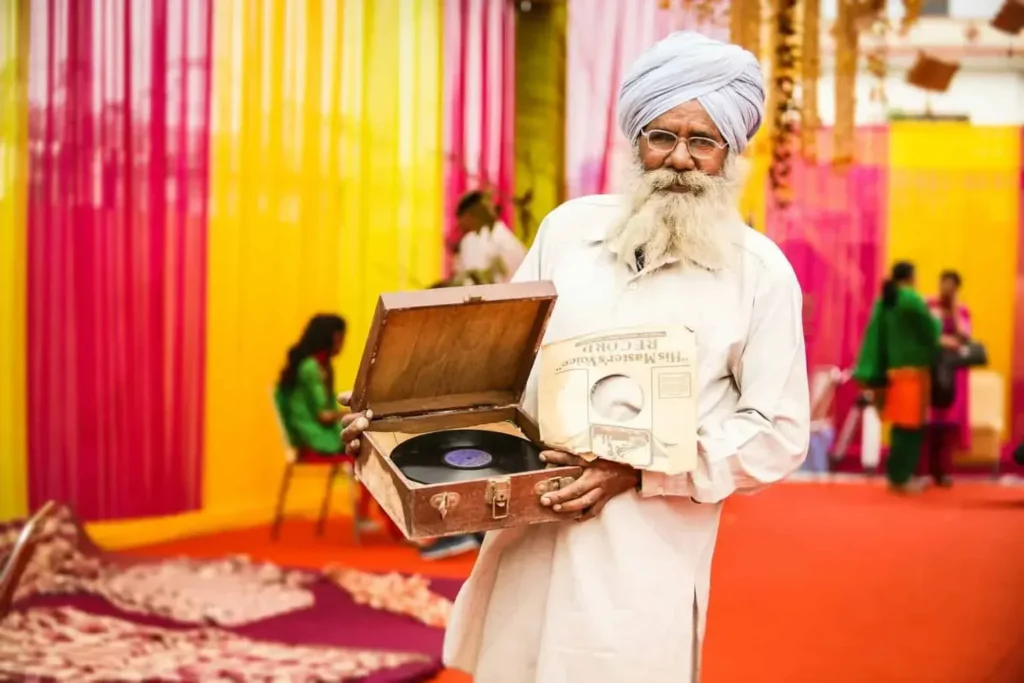Imagine this scenario: you’re cleaning out your closet, trying to decide what to keep and what to let go. Suddenly, you stumble upon a box filled with clothes you haven’t worn in years. As you sift through the fabrics, you can’t help but wonder: are these garments considered vintage? After all, they are 20 years old now. It’s a question that has sparked debates among fashion enthusiasts and collectors alike. In this article, we will delve into the fascinating world of vintage fashion and explore whether the 20-year mark can truly be deemed as “vintage.”

This image is property of images.unsplash.com.
Understanding the Term ‘Vintage’
Definition and meaning of ‘vintage’
When we talk about something being ‘vintage,’ we are referring to an item that is of high quality and representative of a specific era or time period. Vintage items are often considered to be unique and valuable due to their age, craftsmanship, and design. These items evoke a sense of nostalgia and can offer a glimpse into the past.
How vintage is different from other terminology like ‘retro’ and ‘antique’
While the terms ‘vintage,’ ‘retro,’ and ‘antique’ are often used interchangeably, they each have distinct meanings. Retro refers to new items that are made to imitate or pay homage to a previous era’s style. Antique, on the other hand, typically refers to items that are at least 100 years old. Vintage falls somewhere in between, usually referring to items that are at least 20 years old but not yet considered antique.
Applying ‘vintage’ to different categories: Clothing, Accessories, Home Decor, etc
The term ‘vintage’ can be applied to various categories, including clothing, accessories, home decor, and more. In the realm of fashion, vintage clothing refers to garments from a specific era that are often sought after for their unique designs and high-quality materials. Vintage accessories, such as handbags or jewelry, can also offer a touch of nostalgia and add a distinctive flair to any outfit. Similarly, vintage home decor items, such as furniture or decorative pieces, can bring a touch of charm and character to a space.
Breaking Down ‘Vintage’ in Context of Time
Commonly accepted timeframes for vintage items
While there is some debate about what exactly defines an item as vintage in terms of its age, a commonly accepted timeframe is that the item should be at least 20 years old. This timeframe allows for enough time to pass for an item to acquire a sense of history and cultural significance.
Contrasting opinions on what makes something vintage
Despite the generally accepted timeframe of 20 years, there are contrasting opinions on what truly makes something vintage. Some argue that an item must possess a certain level of rarity or collectibility to be considered vintage. Others believe that an item must represent a specific era or time period, showcasing the design trends and aesthetics of that time.
How the definition of vintage has changed over time
The definition of vintage has evolved over time, influenced by changing cultural perspectives and societal trends. In the past, vintage was often associated with items from the early 1900s or earlier, reflecting a fascination with the Victorian or Edwardian eras. However, as time has progressed, the notion of vintage has expanded to include items from the mid-20th century and even more recent decades. This shift in perspective has allowed for a broader appreciation of different eras and styles.
Is 20 Years Old Vintage?: Debates and Perspectives
Popular opinions regarding 20-year-old items being considered vintage
There is a wide range of opinions regarding whether 20-year-old items should be considered vintage. Many individuals believe that the 20-year mark is an appropriate threshold, as it allows enough time for an item to become nostalgic and desirable. It also provides a clear distinction between vintage and contemporary pieces.
Arguments against 20 years old being vintage
Despite the popularity of the 20-year timeframe, there are arguments against considering items of this age as vintage. Some critics argue that 20 years is too short of a period to classify an item as vintage, as it takes more time to develop historical and cultural significance. Additionally, they suggest that labeling items as vintage at such a young age diminishes the value and exclusivity associated with true vintage pieces.
Effects of fast-paced, modern lifestyle on the definition of vintage
The fast-paced, modern lifestyle of today has undoubtedly influenced the definition of vintage. With trends constantly changing, nostalgia for recent decades has become more prevalent. As a result, there has been a shift in perspective, with the 20-year mark becoming widely accepted for vintage classification. This change reflects a society that values nostalgia and seeks connections to the past in the midst of rapid technological advancements.
The Vintage Market
Understanding the demand for vintage items
The demand for vintage items has been steadily increasing in recent years. Many people are drawn to the charm, quality, and uniqueness that vintage pieces offer. Vintage clothing, for example, allows individuals to express their personal style while standing out from the crowd. Similarly, vintage home decor items can add character and individuality to living spaces. The demand for vintage items extends beyond individual consumers, with vintage shops and online platforms catering to this growing market.
Evaluating the worth of vintage items
Determining the worth of vintage items can be a complex task. Factors such as rarity, condition, and historical significance all play a role in determining an item’s value. Additionally, the desirability of certain eras or styles can impact an item’s price. The worth of vintage items is often subjective, as personal preferences and trends influence the perceived value.
Trends in the vintage market
As with any market, the vintage industry experiences trends and shifts in popularity. Currently, there is a strong interest in vintage items from the 1990s and 2000s. This increased demand is driven by a desire for nostalgia and a renewed appreciation for the distinctive styles of those decades. The vintage market continually evolves as new eras gain popularity, and the tastes and preferences of collectors and consumers change.

This image is property of images.unsplash.com.
Impact of Cultural Significance on Vintage Label
The role of historical, cultural significance in categorizing items as vintage
Historical and cultural significance play a crucial role in categorizing items as vintage. Certain items are considered vintage not only for their age but also for the impact they had on a particular era or cultural movement. For example, clothing from the 1960s may be highly sought after because it represents the fashion trends and social changes of that time. Historical context adds depth and meaning to vintage items, making them more desirable to collectors and enthusiasts.
Case studies: Products from the ’90s as vintage items
As time progresses, items from the 1990s are increasingly being considered vintage. This shift can be seen in the fashion industry, where ’90s-inspired trends have gained popularity in recent years. Products such as vintage band t-shirts, iconic sneakers, and ’90s gadgets are now sought after by collectors and enthusiasts. These items hold cultural significance as they represent a specific era that holds nostalgic value for many.
Questioning: Can cultural significance overshadow timeframes in defining vintage?
The influence of cultural significance raises questions about whether it can overshadow timeframes in defining vintage. While age is an essential factor, an item’s cultural impact can often hold more weight in determining its vintage status. The significance and relevance of an item to a particular era can make it highly sought after, even if it falls short of the standard 20-year timeframe. This blurring of boundaries challenges traditional definitions and encourages a more fluid understanding of vintage.
The Age of Ignorance: Common Misconceptions about Vintage
Clarifying common misconceptions about vintage items
Vintage items often face misconceptions that can lead to misunderstandings and mislabeling. One common misconception is that vintage items are inherently valuable and expensive. While some vintage pieces can have a high price tag, not all vintage items are rare or valuable. Additionally, vintage does not necessarily mean pristine or like-new condition, as signs of wear and age can actually add to the charm and authenticity of an item.
The danger of inaccurate vintage labeling
Inaccurate vintage labeling can mislead consumers and diminish the authenticity of the vintage market. Misusing the term ‘vintage’ to promote modern products or passing off replicas as vintage can erode trust within the market. It is crucial for sellers, consumers, and enthusiasts to understand and accurately label vintage items to preserve the integrity of the industry.
Misuse of ‘vintage’ in advertising and marketing
The term ‘vintage’ is often misused in advertising and marketing to create a sense of nostalgia and appeal to consumers’ desire for unique, authentic items. This misuse can contribute to the overall confusion surrounding the term vintage and further perpetuate common misconceptions. It is essential for businesses to use the term responsibly and accurately to maintain transparency and credibility.

This image is property of images.unsplash.com.
Vintage Experts: An Insider’s Viewpoint
Interviews with vintage clothing, accessory experts
Seeking the perspective of vintage clothing and accessory experts provides valuable insights into the industry. These experts have extensive knowledge and experience in curating and evaluating vintage pieces. Through interviews, they can shed light on the intricacies of the vintage market, trends they observe, and their opinions on defining vintage items.
Expert perspectives on the 20-year vintage debate
Experts in the field may have differing perspectives on the 20-year vintage debate. Some experts may firmly believe that 20 years is an appropriate timeframe, while others may argue for longer time periods. Gaining insights from these experts can give us a deeper understanding of the nuances and considerations in defining vintage.
Changing perceptions and trends in the vintage industry
The vintage industry is not static and continually evolves with changing perceptions and trends. Expert viewpoints can offer valuable observations regarding the shifts and changes they have witnessed in the industry. From the emergence of new eras as vintage to the evolving preferences of collectors and consumers, these insights help shape a comprehensive view of the vintage landscape.
Experiencing Vintage: Stories from Vintage Collectors
Stories from people who collect vintage items
Hearing stories directly from vintage collectors provides firsthand accounts of the joy and passion they have for their unique treasures. These collectors often have personal anecdotes about their favorite finds, the thrill of the hunt, and the emotional value they attach to their vintage items. Their experiences add depth to our understanding of the impact and significance of vintage in people’s lives.
Personal experiences with 20-year-old vintage items
Collectors and enthusiasts may have personal experiences with 20-year-old vintage items that shed light on their value and appeal. These items may hold sentimental value or represent a specific moment in their lives. Exploring these personal experiences helps us connect with the emotional and nostalgic aspects of vintage and understand why these items hold such importance to individuals.
The emotional value of vintage
Vintage items often carry emotional value beyond their material worth. Whether it’s a vintage piece passed down through generations or a carefully curated collection, these items evoke memories, stories, and a sense of connection to the past. The emotional attachment to vintage is an integral part of its appeal and allure.
Rise of 20-Year-Old Vintage: Influence of Pop Culture
Impact of movies, TV shows, music from the ’90s and ’00s reviving as vintage
Pop culture plays a significant role in driving the 20-year-old vintage trend. The resurgence of movies, TV shows, and music from the 1990s and early 2000s has reignited interest in the aesthetics and styles of those eras. People seek to emulate the fashion and trends that they remember or discover through popular culture, fueling the demand for 20-year-old vintage items.
Influence of celebrities on the 20-year-old vintage movement
Celebrities have a considerable influence on fashion trends and the popularity of vintage items. When celebrities are seen wearing or endorsing vintage pieces, it often leads to increased desirability and demand for similar items. This influence can help propel the 20-year-old vintage movement and bring it into the mainstream.
Role of social media in promoting the 20-year-old vintage trend
Social media platforms have played a pivotal role in promoting the 20-year-old vintage trend. By showcasing vintage finds and styling ideas, influencers and enthusiasts inspire others to embrace this trend. Additionally, online vintage marketplaces provide a convenient platform for collectors, sellers, and buyers to connect and exchange 20-year-old vintage items.
Looking Ahead: The Future of Vintage
Projection of future trends in vintage
While it is challenging to predict the future with certainty, some trends in the vintage industry can shed light on what the future may hold. As time progresses, we can expect to see newer eras, such as the early 2000s, gaining popularity as vintage. Additionally, sustainability and eco-consciousness are likely to influence the vintage market, as people seek to reduce waste by embracing pre-owned, timeless pieces.
Implications of the 20-year-old vintage debate for future classifications
The ongoing debate surrounding the 20-year vintage threshold will shape future classifications in the vintage industry. As perspectives continue to evolve, it is possible that the definition of vintage may expand to include items from more recent eras. This could have implications for collectors, sellers, and consumers, as it may influence pricing, availability, and the overall perception of vintage.
How the understanding of vintage may change in the future
As society progresses, our understanding and appreciation of vintage are likely to evolve. The future may bring a greater emphasis on the cultural context and impact of an item rather than solely focusing on age. Preservation and documentation of modern cultural artifacts may become important factors in defining vintage, allowing future generations to connect with and appreciate the items of their own time.

